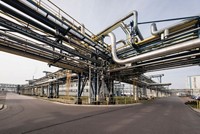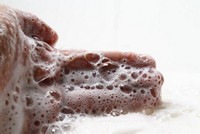Advertisement
Grab your lab coat. Let's get started
Welcome!
Welcome!
Create an account below to get 6 C&EN articles per month, receive newsletters and more - all free.
It seems this is your first time logging in online. Please enter the following information to continue.
As an ACS member you automatically get access to this site. All we need is few more details to create your reading experience.
Not you? Sign in with a different account.
Not you? Sign in with a different account.
ERROR 1
ERROR 1
ERROR 2
ERROR 2
ERROR 2
ERROR 2
ERROR 2
Password and Confirm password must match.
If you have an ACS member number, please enter it here so we can link this account to your membership. (optional)
ERROR 2
ACS values your privacy. By submitting your information, you are gaining access to C&EN and subscribing to our weekly newsletter. We use the information you provide to make your reading experience better, and we will never sell your data to third party members.
Petrochemicals
Ineos to buy BP’s chemical unit for $5 billion
Acquisition will give the British firm a leading aromatics and acetyls business
by Alexander H. Tullo
June 29, 2020

In a divestiture of almost all the rest of its once-sprawling chemical empire, BP has agreed to sell its aromatics and acetyls business for $5 billion to Ineos, a past buyer of BP operations.
The BP business is one of the worlds largest producers of purified terephthalic acid (PTA), the most important raw material for making polyethylene terephthalate, also known as polyester. It is also a major producer of acetic acid.
The oil company operates PTA plants in South Carolina, Belgium, China, Indonesia, and Taiwan. It operates an acetic acid plant in Hull, England, and has smaller acetic plants across Asia. Much of the company’s PTA production is back integrated into the raw material p-xylene.
BP says the assets it’s selling have a book value of $3.5 billion and produced 9.7 million metric tons of chemicals last year. BP won’t disclose a revenue figure but says the business employs 1,700 people and generated pretax profits of about $400 million in 2019.
BP will retain a vestige of its old petrochemical business: ethylene crackers in Gelsenkirchen, Germany, that are integrated with the firm’s oil refinery there.
For BP, the sale completes—nearly a year ahead of schedule—a $15 billion round of divestitures meant to raise cash and reduce debt. “Strategically, the overlap with the rest of BP is limited, and it would take considerable capital for us to grow these businesses,” BP CEO Bernard Looney says in a statement.
BP and Ineos have done business together before. In 2005, Ineos agreed to buy BP’s olefins and derivatives operation for $9 billion, giving it businesses in polyolefins, acrylonitrile, and α-olefins.
And Ineos’ origins trace back to BP. In 1995, Ineos founder Jim Ratcliffe conducted a leveraged buyout of BP’s ethylene oxide and derivatives operations in Belgium to form Inspec, which later became Ineos. Ratcliffe calls the latest deal “a logical development of our existing petrochemicals business.” The company anticipates synergies from bringing former BP operations back together, such those at the Hull site.
The deal makes “strategic sense” for BP, according to Steve Jenkins, vice president of petrochemicals at the consulting firm Wood Mackenzie. “BP held onto these assets in 2005 when they were making strong profits. Now these chemicals businesses are struggling with overcapacity, and BP is urgently raising cash,” he says, noting that the sale controverts the current trend of large oil companies investing more heavily in petrochemicals.
Ineos, Jenkins adds, can look forward to operational synergies. “The deal includes a number of collocated assets and represents a good overall fit with very limited overlap.”





Join the conversation
Contact the reporter
Submit a Letter to the Editor for publication
Engage with us on Twitter